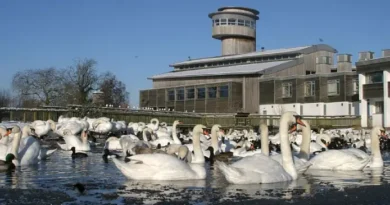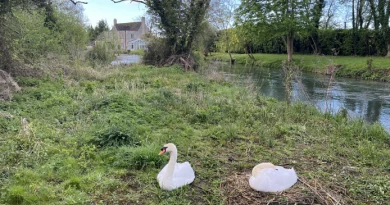13. Cotswold Market Halls
Several prominent towns in the Cotswolds are fortunate to have iconic, steeped-in-history Market Halls as their centrepieces.
One can be found in the centre of Tetbury, where the three-storey Market Hall is an attractively restored pillared building dating back to 1655.
Over the years, it has served as a market, fire station, and gaol. The cupola on top was added to mark Queen Victoria’s Jubilee, but apart from that, the Market Hall is much as it would have been over 350 years ago, and it is still the site of regular events.
Chipping Campden’s beautiful Market Hall was built in 1627 by the town’s wealthy benefactor Sir Baptist Hicks. This town landmark was built to provide shelter for townsfolk who traded goods like cheese, butter, and poultry during a period when the wool trade was in decline.
With its splendid arches and surrounded by ancient houses made from the local honey-coloured stone, it’s easy to imagine the marketplace alive with the bustle of traders from centuries past.
In the 1940s, Chipping Campden’s Market Hall was almost sold to an American. Still, local people heroically raised the money to buy it first. They gave it to the National Trust so this delightful building could continue to be cherished by future generations.
Minchinhampton Market House is another iconic building in the centre of a Cotswold town that was created, with the parish church, the Crown Inn, and the war memorial, as an image of this old market town in its heyday.
The 17th-century building sits on an open under-croft, its arches barricaded to prevent the entry of cattle from the surrounding commons. The first floor, reached by an imposing staircase with a stairlift, provides a main hall with a gallery, stage and a small kitchen that can be rented for events.
Dursley’s Market House is the centrepiece of the town, a symbol, standing at the junction of the town’s three main trading streets – Parsonage Street, Long Street and Silver Street – and dominating the view from all of them.
Built in 1738, the Market House was entirely funded by the Estcourt family for regular markets and fairs held in, under, or around the building.
The building stands on pillars with the Town Hall above, accessible via a staircase. A Blindhouse, or jail for vagrants, used to be situated under the old steps.
The Estcourt family sold the Market House in 1841. From 1894, it was managed by the trustees of the Dursley Town Trust until 1996 when the responsibility was handed over to Dursley Town Council.




